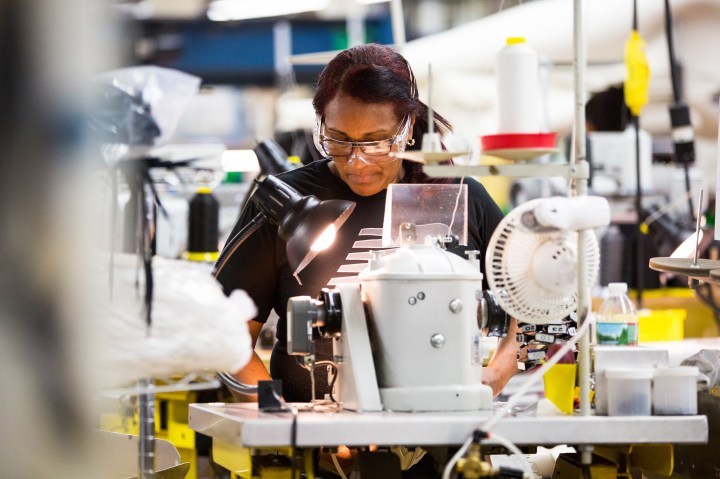
The manufacturing sector is slowing. That could be a sign of a coming recession.
The manufacturing sector is slowing. That could be a sign of a coming recession.

Looking for signs of a slowing economy has become something of a regular pastime on this program and elsewhere.
Some economists have been warning about the prospect of a recession as the Fed continues to tap the brakes on the economy to fight inflation.
And now we may finally have some hard evidence of a slowdown — in one particular sector, anyway: manufacturing.
Today the Commerce Department reported that factory orders in May were up an underwhelming 3-tenths percent — and revised the previous month’s figure downward.
Meanwhile, the Institute for Supply Management’s Purchasing Managers Index — a survey that measures manufacturing activity — fell again in June for an 8th straight month.
What’s this tell us about the broader economy?
Some parts of the economy are still chugging along— consumer spending, home-building and buying — but America’s makers of stuff — manufacturers — have stalled out, says Mark Zandi at Moody’s Analytics.
“In terms of production, in terms of employment, it’s going nowhere fast. And it is at this point the weakest part of the broader economy,” Zandi said.
This is a trend around the world, says Ariane Curtis at Capital Economics in London.
“Manufacturing activity actually contracted at a global level at the end of the second quarter,” said Curtis.
Soaring interest rates have made buying stuff like appliances and factory equipment more expensive . . . Meanwhile, consumers are spending less on goods and more on services they missed out on during the pandemic.
Plus, says Curtis: “Supply chains are no longer an issue. They’ve worked through most of these backlogs of orders. So with the lack of demand, it means less activity.”
And more financial trouble, says Dan North at Allianz Trade.
His manufacturing clients buy insurance to protect themselves when customers don’t pay their bills. And “We’re seeing a very sharp increase in claims this year, an even sharper increase in past-dues, that is, when our clients tell us every month who’s paying them late, how much they owe, how long has it been outstanding,” said North.
Manufacturing represents just over 10% of Gross Domestic Product, and is not the be-all and end-all of the U.S. economy. But Zandi says it has outsized influence and tends to be an indicator of where the economy’s headed.
And, while the near-term may look mediocre, Zandi’s more optimistic about the future.
“You can see that in the surge in construction of manufacturing structures — of factories. I mean, since we reopened in the wake of the pandemic, manufacturing construction has more than doubled. It’s going stratospheric,” said Zandi.
And that surge is being driven by federal investment in green energy and the reshoring of high-tech supply-chains.
There’s a lot happening in the world. Through it all, Marketplace is here for you.
You rely on Marketplace to break down the world’s events and tell you how it affects you in a fact-based, approachable way. We rely on your financial support to keep making that possible.
Your donation today powers the independent journalism that you rely on. For just $5/month, you can help sustain Marketplace so we can keep reporting on the things that matter to you.

















